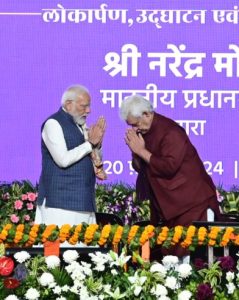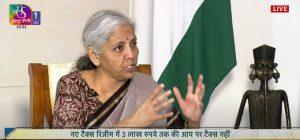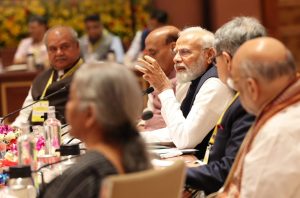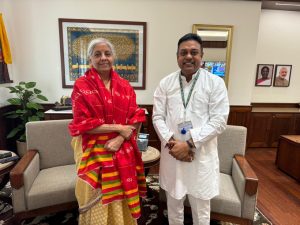National Herald Case: Unravelling financial cobweb

By Rahul Kumar Dubey
New Delhi, July 29: The Congress made spectacles out of the appearances of its working president Sonia Gandhi and former party chief Rahul Gandhi before the Enforcement Directorate (RD).
In political circles, there’s a marked contrast to the probe of Gujarat’s chief minister in 2010, Narendra Modi, who appeared before the Special Investigation Team (SIT), while the BJP workers didn’t hit the streets.
When Modi exited the investigation in accordance with legal procedures, he spoke to the media and declared his desire to fully cooperate with the authorities. “The Supreme Court ordered SIT had written to me a letter in which I was asked to visit the ED personally. On March 27, today, I am here before the SIT. They had a detailed discussion with me and have asked me all the questions they intended to ask. I have said this already that laws in the constitution are Supreme and as a citizen and the Chief Minister, I am too bound by the law”.[1]
The Congress in contrast has levelled charges of political vendetta against the BJP-led government at the Centre.
The basis for the ED case is a trial court order that gave the Income Tax Department permission to look into the operations of the National Herald newspaper and assess Sonia Gandhi and Rahul Gandhi’s involvement in the case.
The National Herald[2]
The National Herald was founded by Jawaharlal Nehru in 1938 and was published by AJL, a Section 25 corporation, which is typically a not-for-profit organisation that owns valuable real estate in prominent Indian towns. Due to a lack of funding and an overstaffing, AJL was pushed to losses and stopped publication in April 2008, post which its revenue came mostly from the sale of the many assets it owned. 5A Herald House, on Bahadurshah Zafar Marge in New Delhi, was one of its principal assets.
The unsecured debt owed by AJL at the end of 2010 had reached Rs 90.21 crore, while they made no effort to pay the AICC back despite holding real estate worth Rs. 413 crores.[3]
Gandhi family’s loyalists, Suman Dubey and Sam Pitroda, served as the directors of Young India, but who transferred their shares to Congress leaders Oscar Fernandes, Sonia Gandhi, Rahul Gandhi, and late Moti Lal Vora as soon as the company was incorporated.
Later, Sonia Gandhi joined the board as a Director on January 22, 2011, while Rahul Gandhi was named Director of Young Indian on December 13, 2010. Sonia Gandhi and Rahul Gandhi both owned 38 % of the firm as of March 2017, while equal shares of Vora and Fernandes controlled the remaining 24 per cent. YI subsequently established itself as a charity organisation under Section 12A of the Income Tax Act, qualifying it for a 100 per cent tax exemption.[4]
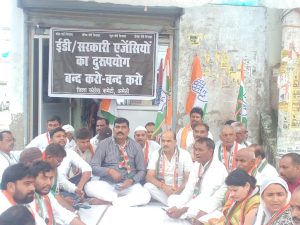
The AICC resolved to transfer AJL’s almost Rs 90 crore debt to the Young Indian, which only had Rs 5 lakh in paid-up capital. As a result, it made the decision to borrow Rs 1 crore from M/s Dotex Merchandise Pvt. Ltd. in Kolkata.[5] The RPG Group currently owns Dotex, which the Income Tax Department claimed was a business that permitted lodging entries in exchange for a commission.[6]
The Financial Intelligence Unit of the Finance Ministry also marked this loan of Rs 1 crore as a “suspicious transaction.”[7] It should be noted that YI received the loan from AICC on December 28, 2010, more than two months before YI made any payments to AICC, while YI didn’t even have a bank account at that time. According to the IT investigation, YI opened its office in 2010 in Herald House, which is owned by AJL, without any prior consent or payment of rent to AJL.[8]
The IT Department has also expressed scepticism on the alleged loan that the Congress allegedly transferred to AJL, claiming that the only source of proof is AJL’s records. The IT submission to the IT Appellate Tribunal stated, “The amount of loan entry of Rs 90.21 crore was fixed in order to ensure that the amount was just sufficient to allot 99% share of AJL to the Appellant (YI),”
Young Indian received 9,02,16,899 equity shares from AJL in place of the debt that was originally given to the company by YI. In this way, Young Indian acquired about 99.99 per cent of the shares of AJL. The IT Department has claimed that Rahul Gandhi and Priyanka Gandhi Vadra had acquired an additional 47,513 and 2,62,411 shares through Rattan Deep Trust and Janhit Nidhi Trust, respectively, in order to meet the goal of controlling 100 per cent of the shares of AJL by YI’s main shareholders.[9]
The Area of Suspicion
The AICC claimed it was unsure if AJL would be able to repay the debt, so it transferred the entirety of its loan to YI for just Rs 50 lakh, however AJL possessed property worth hundreds of crores, making it in a very excellent position to repay the debt. Additionally, it was stated in AJL’s notes to Accounts for the financial year 2010-11 that the management was optimistic about a recovery for the business.
The fact that the same individuals served as office holders for both AJL and AICC made it odd for the former to believe that its loan could not be repaid. AICC treasurer (before), AJL CMD, and shareholder and director at Young Indian, Late Vora had roles in all three organisations, which created further significant issues about conflicts of interest. While also, as per the Representation of the People Act of 1950, loans from political parties are prohibited.
Rahul Gandhi had previously received a warning from the IT Department for allegedly hiding details about his position as a director of Young Indian. According to the report, Rahul Gandhi’s shares in Young Indian generated income of Rs 154 crore as opposed to the prior estimate of Rs 68 lakh.[10]
On October 26, 2017, the CIT(E) revoked the registration that had been given to YI under Section 12A on the grounds that YI had engaged in no real charity activity, either in advancement of its objectives or otherwise.[11] The IT Tribunal affirmed the cancellation. The IT Appellate Tribunal ordered the IT Government to do more inquiries into the situation on March 31, 2022, even as it overturned several tax demands made by the department on YI.
It was shocking for Congress workers to witness their leader being asked to answer difficult questions before the ED since the Gandhis always believed themselves to be a family that was far above India’s institutions. The party used its supporters, from serving Chief Ministers to low-level workers, to hold protest across the Lutyens when Gandhi approached the ED office, even though the fifth-generation dynast was just requested to follow the investigative protocol.
(Views expressed in the article solely belong to author, who’s a researcher with Public Policy Research Centre)
[1] https://www.youtube.com/watch?v=qInjHAsHSlQ&feature=emb_title
[2] https://www.business-standard.com/about/what-is-national-herald-case
[3] https://www.business-standard.com/article/pti-stories/herald-case-chronology-118122101160_1.html
[4] https://thefederal.com/explainers-2/a-step-by-step-explanation-of-the-national-herald-case/
[5] https://thefederal.com/explainers-2/a-step-by-step-explanation-of-the-national-herald-case/
[6] https://www.pgurus.com/congress-in-the-dock-over-fresh-expose-in-national-herald-case/
[7] https://timesofindia.indiatimes.com/india/ed-quizzes-sonia-gandhi-for-2-hours-in-national-herald-case-summons-her-again-on-monday/articleshow/93038593.cms
[8] https://timesofindia.indiatimes.com/india/young-indian-started-with-5l-in-2010-now-has-assets-of-800-crore-ed-probe/articleshow/91950401.cms
[9] https://www.livelaw.in/pdf_upload/1648723950-1251-2019-young-indian-414041.pdf
[10] https://www.livelaw.in/pdf_upload/1648723950-1251-2019-young-indian-414041.pdf
[11] https://indiankanoon.org/doc/132522278/


